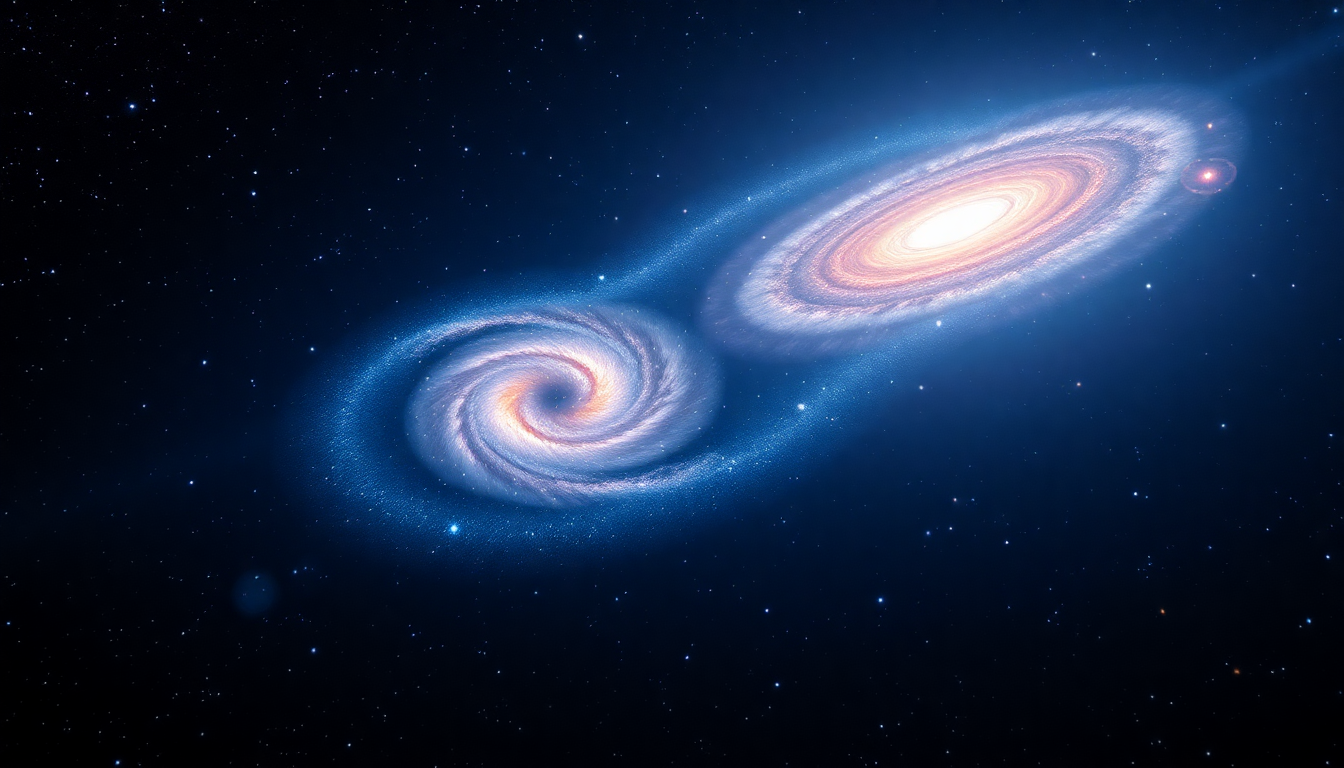Table of Contents
A remarkable breakthrough in astronomy is making waves, and it’s all thanks to the investigation of a distant galaxy cluster called SpARCS1049. Picture this: researchers have detected faint radio waves that have traveled an astonishing 10 billion years to reach Earth. These signals could provide crucial insights into the formation and evolution of the early universe. This discovery not only expands our cosmic horizons but also raises significant questions about the energetic processes that have been shaping galaxy clusters throughout history. Exciting, right?
Diving Into the Discovery
The recent study published in The Astrophysical Journal Letters reveals that the radio signals originated from a vast region of space filled with high-energy particles and magnetic fields. This environment, referred to as a mini-halo, has never before been detected at such depths in space. It indicates a previously unexplored aspect of cosmic structure. Imagine faint groups of charged particles emitting both radio and X-ray waves, typically found in clusters between galaxies. Fascinating stuff!
Co-author Roland Timmerman from the Institute for Computational Cosmology at Durham University couldn’t hide his astonishment at the strength of the radio signal detected from such a great distance. He pointed out that this finding implies that energetic particles and the processes that create them have been influencing galaxy cluster formation for nearly the entire history of the universe. This underscores the potential of these cosmic phenomena to reshape our understanding of cosmic evolution. How cool is that?
Supermassive Black Holes and Cosmic Collisions: What’s the Connection?
The study outlines two primary mechanisms that might explain how these mini-halos form. First up: supermassive black holes situated at the cores of galaxies. These cosmic giants can release high-energy particles into the surrounding space. But here’s the kicker—how do these particles manage to escape such powerful gravitational forces to form the observed clusters? It’s a cosmic puzzle waiting to be solved!
The second explanation revolves around cosmic particle collisions. When charged particles filled with hot plasma collide at speeds approaching that of light, exciting things happen. These interactions can break apart particles, allowing for high-energy emissions that we can detect from Earth. This dual mechanism of galaxy energization suggests that the universe may be more dynamic than previously thought. Just think: black holes and cosmic collisions working together much earlier in cosmic history! Mind-blowing, isn’t it?
Looking Ahead: New Frontiers in Astronomy
The implications of this discovery extend far beyond our current understanding of galaxy clusters. The findings suggest that the processes driving galaxy evolution may have been active much earlier than we ever believed. As technology advances, new telescopes like the Square Kilometer Array are in the works, promising to uncover even fainter signals from the depths of space. The future of astronomy looks bright!
Julie Hlavacek-Larrondo, co-lead author of the study from the University of Montreal, emphasized that this discovery merely scratches the surface of our understanding of the energetic nature of the early universe. It opens a new window into how galaxy clusters grow and evolve, driven by the interplay of supermassive black holes and high-energy particle physics. As we delve deeper into the cosmos, the potential to uncover new cosmic secrets continues to grow, reflecting the boundless curiosity that fuels astronomical research. Are you ready to explore this cosmic frontier?


